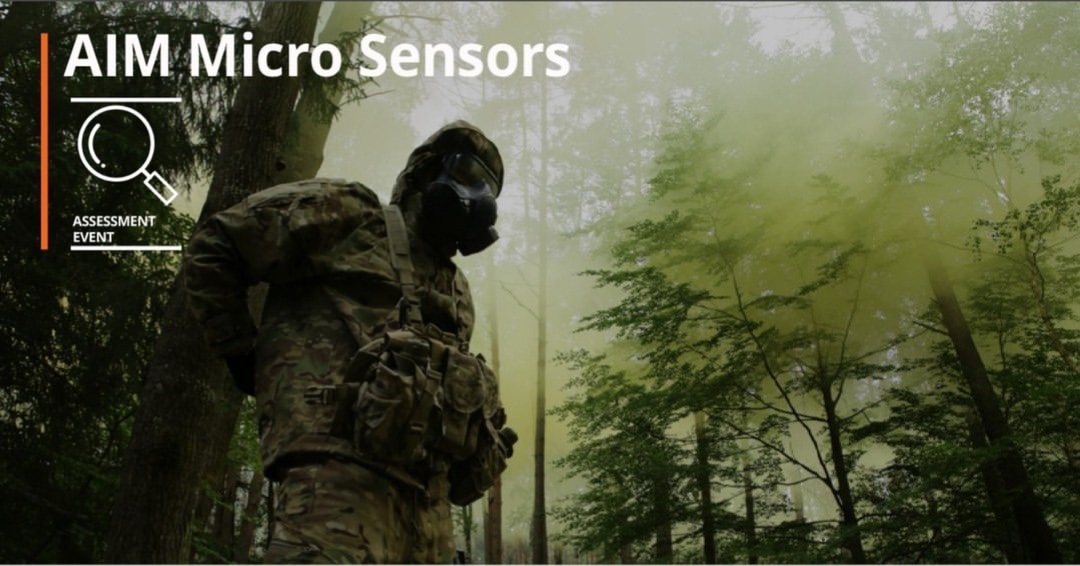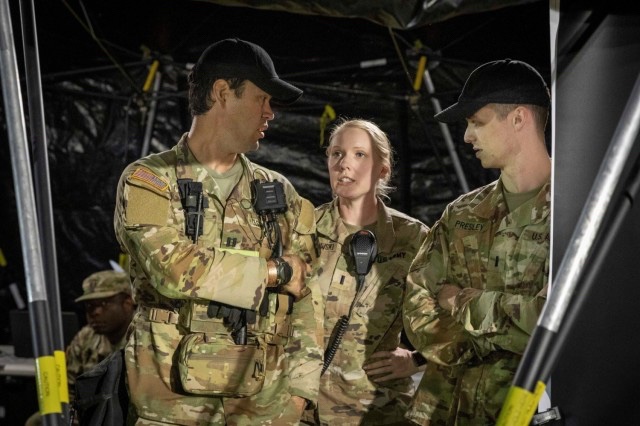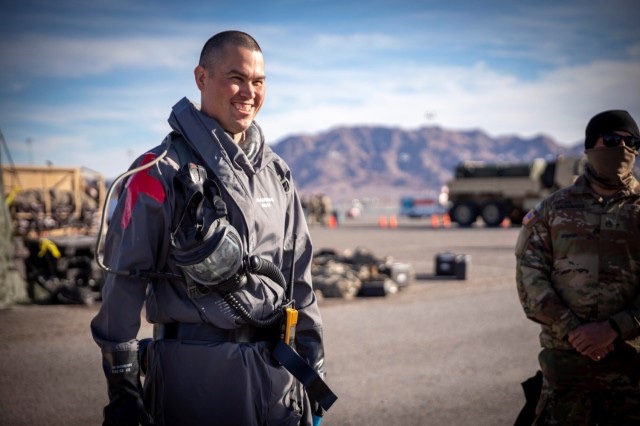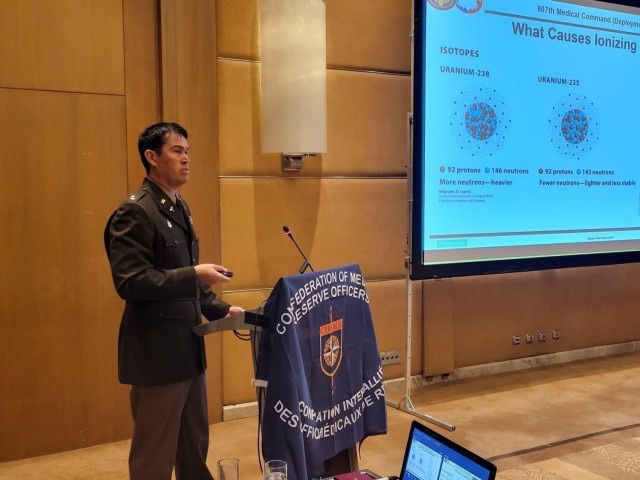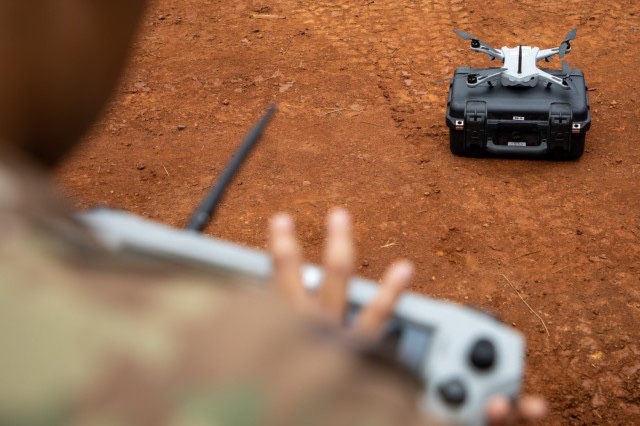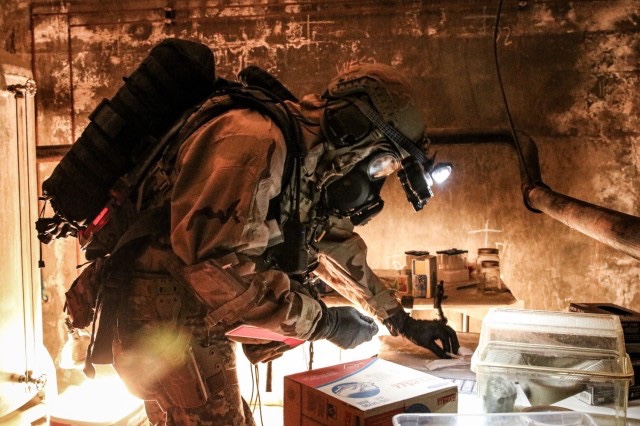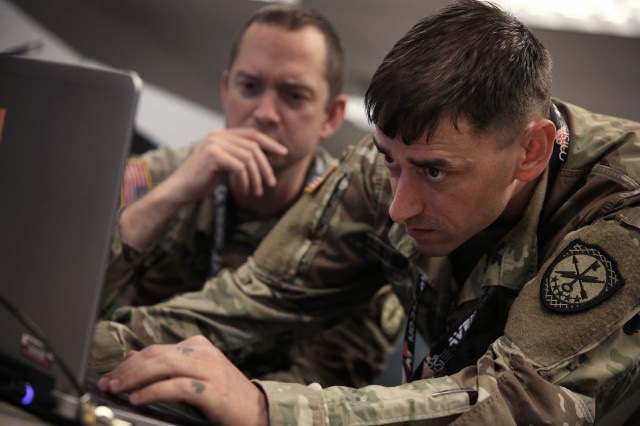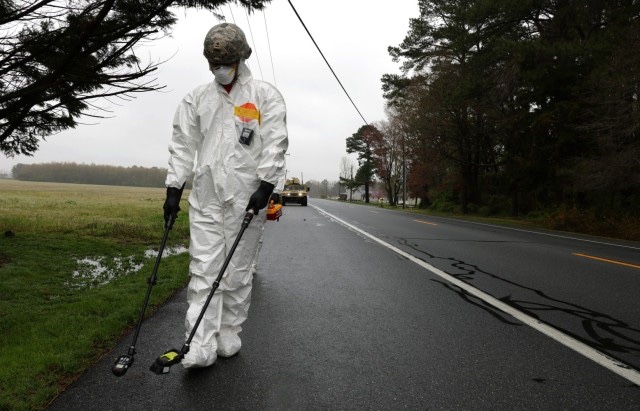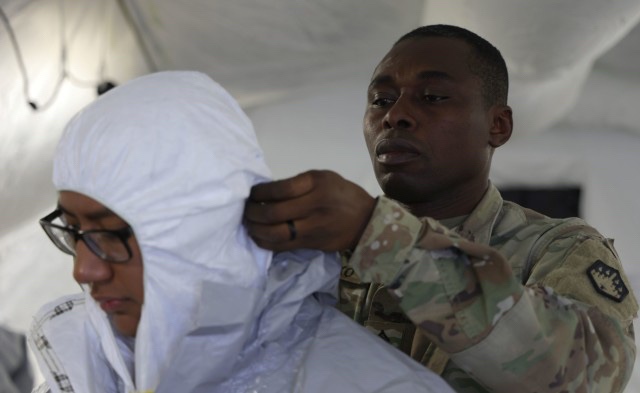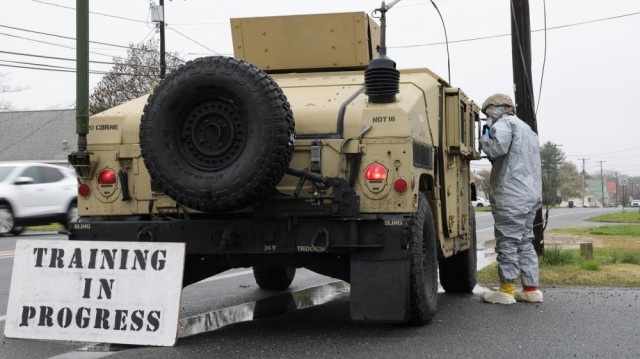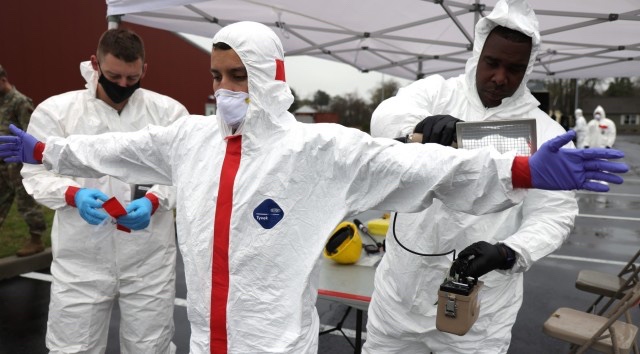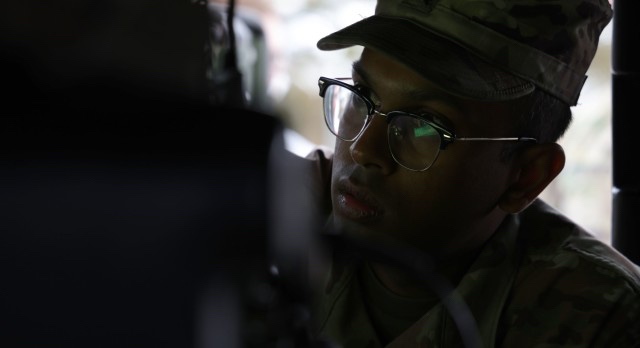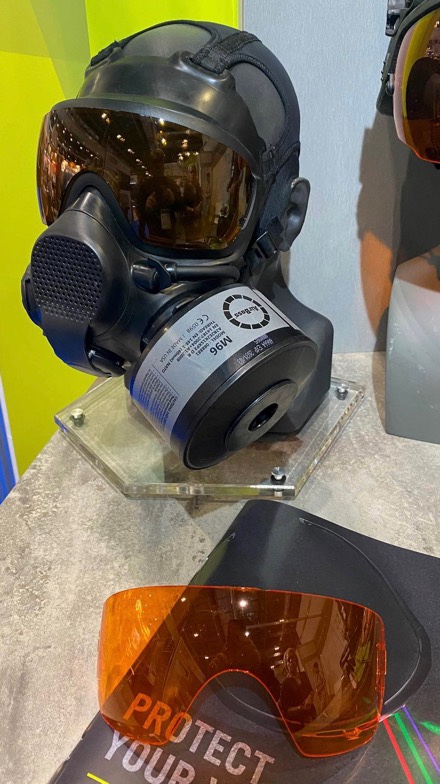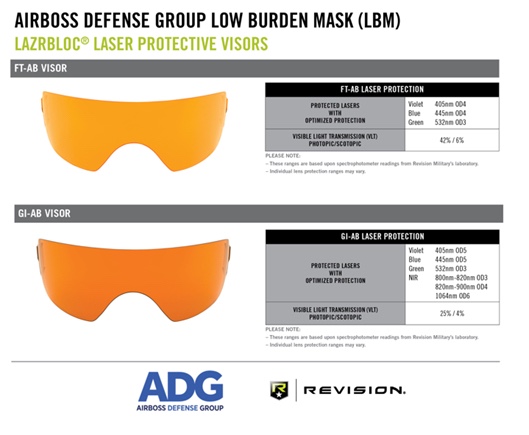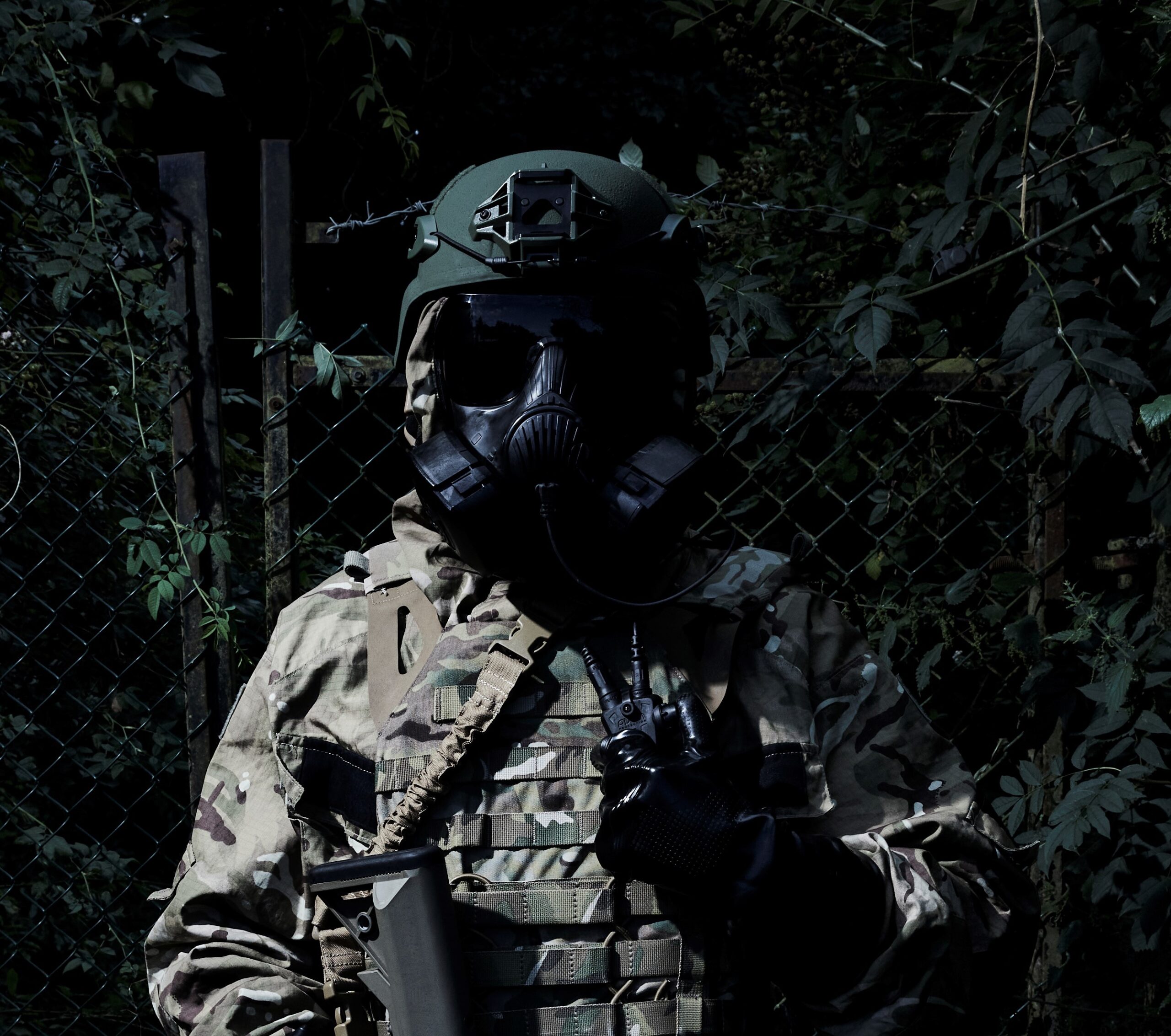SELLAFIELD, England — American Soldiers from Nuclear Disablement Team 2 conducted nuclear counterproliferation training with personnel from the U.S. National Nuclear Security Administration, or NNSA, and the United Kingdom Ministry of Defense during an exercise in May.
The exercise was the first time one of the U.S. Army Nuclear Disablement Teams, or NDTs, have trained in the United Kingdom.
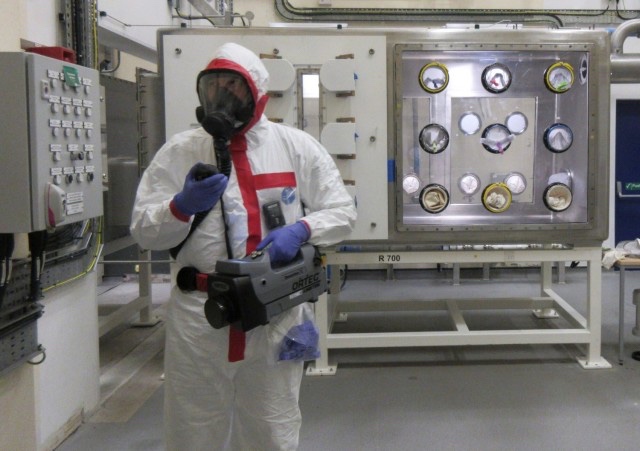
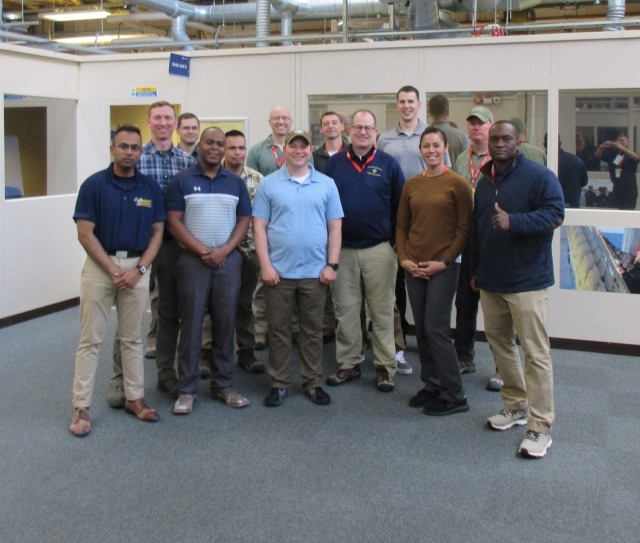
Nuclear Disablement Team 2 is one of three NDTs from the 20th Chemical, Biological, Radiological, Nuclear, Explosives (CBRNE) Command, the U.S. Department of Defense’s premier deployable all hazards formation.
As a part of the 2018 Department of Defense Nuclear Posture Review, the NDTs provide advanced forensics and attribution capabilities in support of overseas and domestic missions.
NDTs directly contribute to the nation’s strategic deterrence by staying ready to exploit and disable nuclear and radiological weapons of mass destruction infrastructure and components to deny near-term capability to adversaries and facilitate elimination operations.
In addition to the NDT 1 “Manhattan,” NDT 2 “Iron Maiden” and NDT 3 “Vandals,” the Aberdeen Proving Ground, Maryland-based 20th CBRNE Command is home to 75 percent of the active-duty Army’s explosive ordnance disposal technicians and chemical, biological, radiological, nuclear specialists, as well as the 1st Area Medical Laboratory, CBRNE Analytical and Remediation Activity and five Weapons of Mass Destruction Coordination Teams.
From 19 bases in 16 states, Soldiers and civilians from the 20th CBRNE Command take on the world’s most dangerous hazards in support of joint, interagency and allied operations.
Maj. Neal J. Trump, a nuclear operations officer from NDT 2, said the nuclear disablement team began planning for the exercise in 2020 but COVID-19 postponed it.
In May 2022, the exercise took place at multiple locations in the United Kingdom. NDT 2 participated during the first half of the month at the Sellafield site in northwest England and at the Weeton Barracks about an hour from Manchester, England.
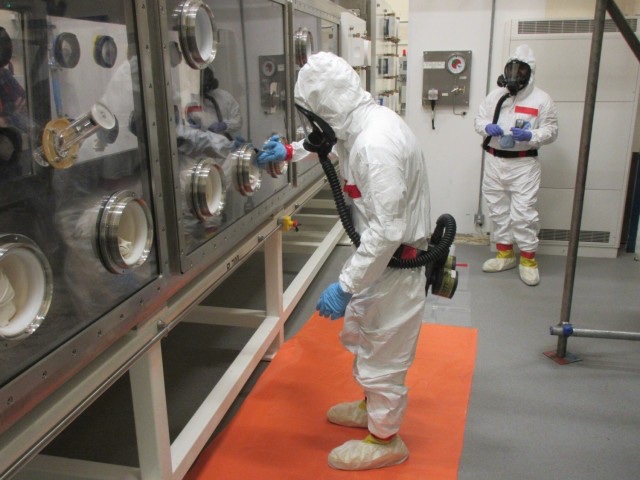
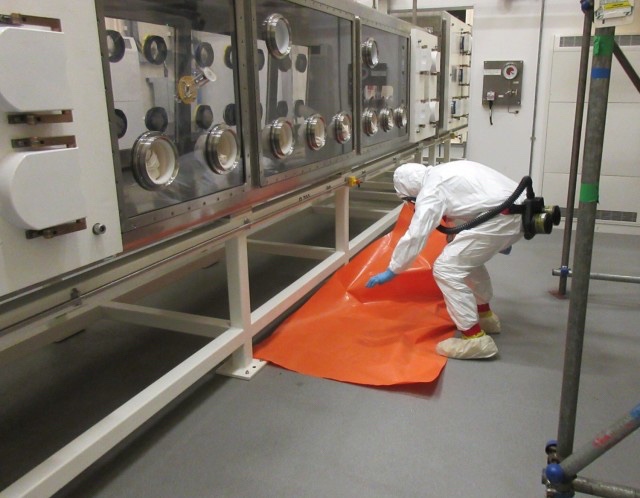
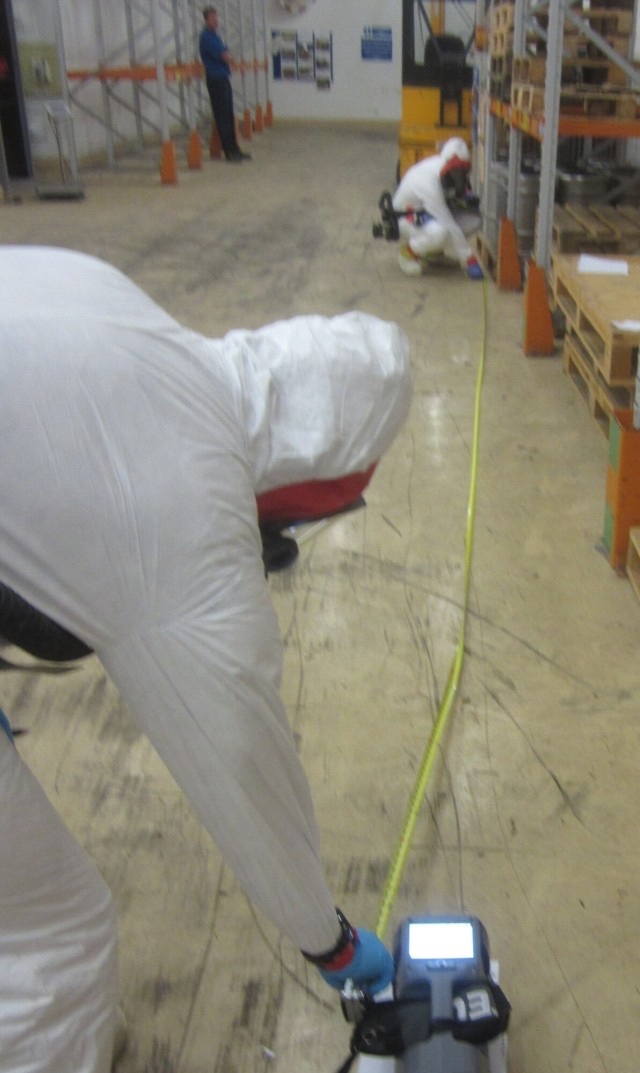
“The exercise as a whole validated the Department of Energy Mobile Packaging Teams in the receipt and processing of material collected from nuclear facilities and also integrated the participation of personnel from the Department of Energy’s Plutonium and Uranium Verification Teams,” said Trump, an Iraq veteran and former infantry officer from Lancaster, Pennsylvania, who has commanded Soldiers in the 82nd Airborne Division and 3rd U.S. Infantry Regiment (Old Guard).
The exercise offered a unique training opportunity for NDT 2 to characterize an industrial-scale reprocessing facility and to recognize the equipment and materials used there, said Trump.
In addition to seven Soldiers from NDT 2, four Soldiers from the other NDTs were able to participate in the exercise.
“This exercise presented a truly unique training experience for NDT 2 that will pay dividends for a long time to come,” said Trump. “Since there are currently no commercial reprocessing facilities for spent nuclear fuel operating in the United States, conducting training at Sellafield exposed team members to a portion of the nuclear full cycle that we rarely have the opportunity to work in and at a scale that nobody had witnessed before.”
Trump said the NDT Soldiers were able to conduct a reconnaissance and characterization of the Thermal Oxide Reprocessing Plant, as well as perform sampling operations of highly accurate simulants from large negative pressure gloveboxes.
“The most enduring effect of the exercise, however, will likely be the excellent relationships we developed with Sellafield personnel that we hope to leverage for further training opportunities in the future,” said Trump.
During the exercise, NDT Soldiers refined procedures for detecting nuclear material and collecting gamma ray spectra, as well as packaging simulated samples of nuclear material to transfer to the NNSA’s Mobile Plutonium Facility.
“Perhaps most importantly, the exercise allowed the team to further develop our relationship with the subject matter experts employed by Department of Energy and NNSA. We hope that our participation in this exercise will open the door to future collaboration between the NDTs and the NNSA,” said Trump. “The highlight of the exercise, from my point of view, was the degree of interagency partnership building that was able to occur.”
At Sellafield, representatives from the NNSA’s Uranium Verification Team and Plutonium Verification Team not only observed the training but also participated in discussions about how both organizations can better support one another in the counterproliferation fight.
NDT 2 Soldiers also used the U.S. Department of Energy’s reach-back process while in the United Kingdom to send requests for information to a U.S.-based team of subject matter experts who were able to provide technical guidance in support of the NDT characterization of the Thermal Oxide Reprocessing Plant.
“At the conclusion of our training, NDT 2 prepared and presented an exploitation brief to senior members of the 20th CBRNE Command and leadership of the NNSA’s Nuclear Compliance Verification and Mobile Packaging programs,” said Trump. “This interaction further served to demonstrate the capabilities of the NDTs to key interagency partners and acted as a relationship-building venue between key [Department of Energy] professionals and NDT personnel.”
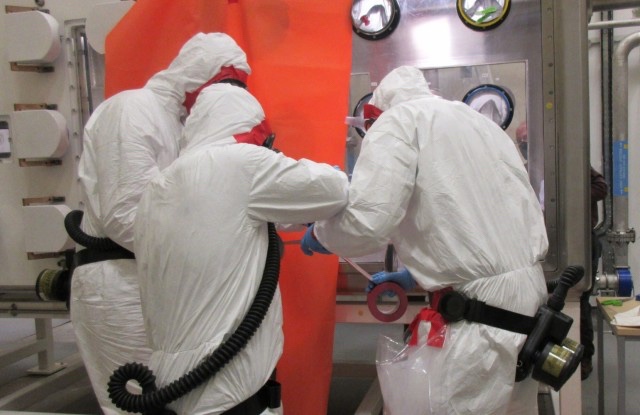
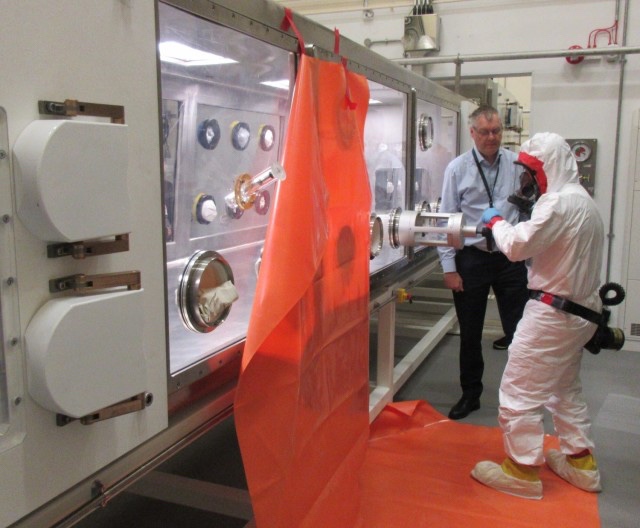
Glen L. Jackson, the White Team lead from the U.S. National Nuclear Security Administration, said the NNSA, U.S. Department of Defense, U.K. Ministry of Defense, Nuclear Decommissioning Authority and countless other mission partners came together to coordinate and deconflict the numerous training activities occurring simultaneously.
Jackson added that meticulous planning ensured that each organization could achieve their respective training objectives while also supporting the broader goals of the exercise.
The National Nuclear Security Administration is responsible for the monitoring, verification, removal and securing of high-risk nuclear and radiological materials and equipment around the world that pose a potential threat to the United States and the international community.
“Overseas deployment exercises provide the opportunity to practice not just these missions but also the foundational logistics required to execute them through the integrated and collaborative efforts of NNSA and Department of Defense,” said Jackson, who has served as a contractor at the Savannah River Site in South Carolina for 31 years.
Jackson was also the White Team leader when 20th CBRNE Command NDT personnel participated in Exercise Relentless Rook at the Savannah River Site in 2021.
Jonathan P. Spencer, a manager at the Sellafield site, said joint training exercises give his site invaluable opportunities to share knowledge and learn from the other participants.
“While Sellafield’s challenges are different in many ways to the challenges faced by the NDT, there are some similarities,” said Spencer. “Seeing how other teams approach tasks like characterization, sampling and radiation and contamination control is very instructive. There are many learning points from the exercise which will help inform our work in the future. Finally, Sellafield recognizes the important role the NDT performs and takes pride in being able to play a small role in the NDT training and exercise program.”
Spencer, who has worked at Sellafield Ltd. for 12 years, credited the success of the exercise to advanced planning done by NDT 2 Team Chief Lt. Col. Ronald C. Lenker and Maj. Neal Trump with his Sellafield team, including Astelle Batty and Gareth Bawden.
“It was evident that the attention to detail resulted in the successful running of the exercise,” said Spencer. “Due to the nature of work on the Sellafield deployments, such as this exercise while on paper may appear simple in reality are not straightforward.”
The exercise was the first at the Sellafield site’s new Glove Box Training Facility.
“It was a great pleasure and honor for Sellafield Ltd to host this visit within [the Thermal Oxide Reprocessing Plant] and our Glovebox Training Facility,” said Spencer. “It was a particular highlight to see NDT members calmly, methodically and professionally tackle the very challenging scenarios we created for them in this new facility.”
By Walter T. Ham IV
